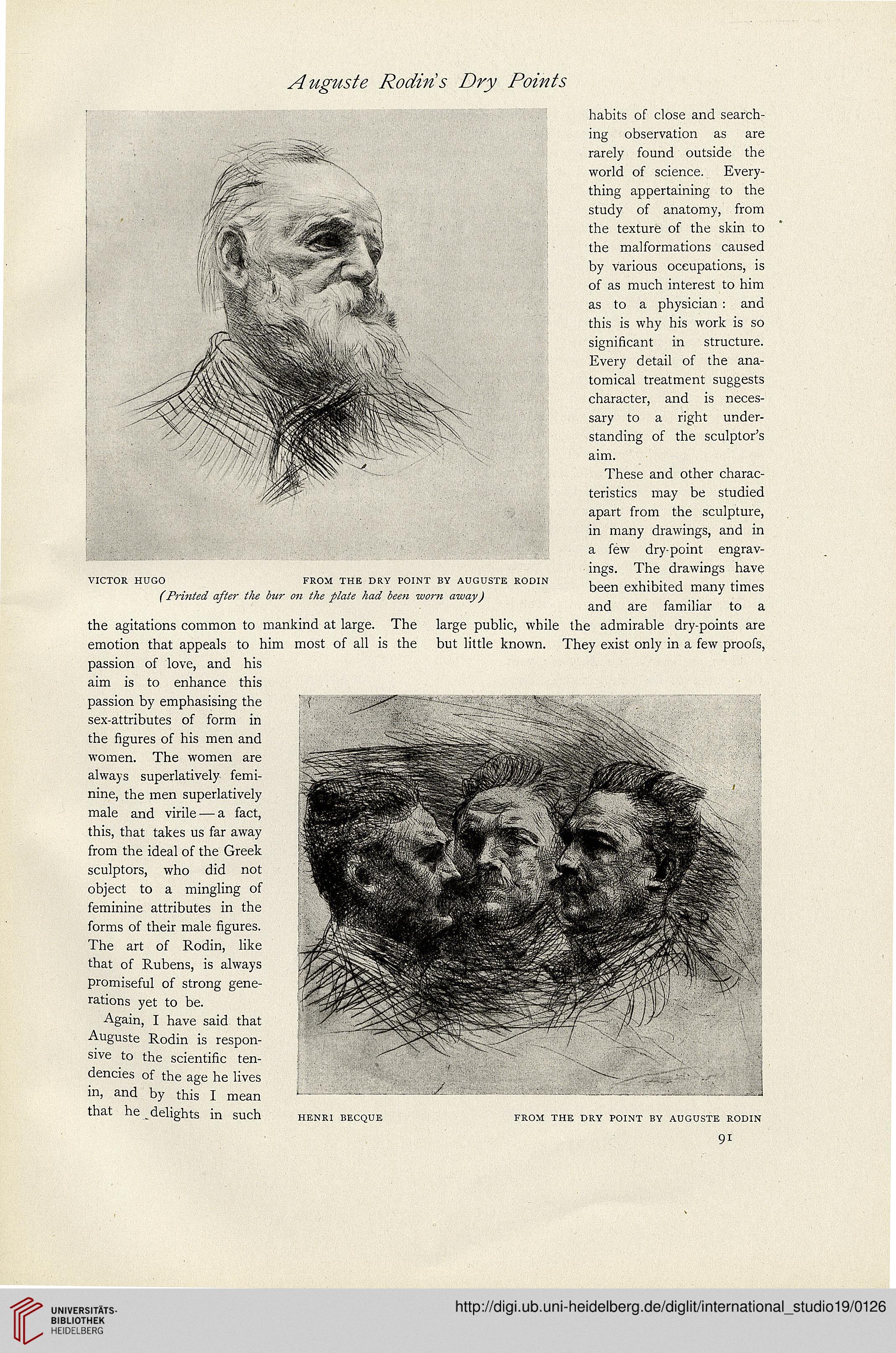VICTOR HUGO FROM THE DRY POINT BY AUGUSTE RODIN
^<?7Z //^<? /^/Z W<?7'/Z /ZW^J
the agitations common to mankind at iarge. The
emotion that appeals to him most of aii is the
passion of love, and his
aim is to enhance this
passion by emphasising the
sex-attributes of form in
the hgures of his men and
women. The women are
aiways superlatively femi-
nine, the men superiativeiy
maie and virile — a fact,
this, that takes us far away
from the ideal of the Greek
scuiptors, who did not
object to a mingiing of
feminine attributes in the
forms of their male hgures.
The art of Rodin, iike
that of Rubens, is always
promisefui of strong gene-
rations yet to be.
Again, I have said that
Auguste Rodin is respon-
sive to the scientihc ten-
dencies of the age he iives
in, and by this I mean
that he delights in such
habits of ciose and search-
ing observation as are
rarely found outside the
worid of science. Every-
thing appertaining to the
study of anatomy, from
the texture of the skin to
the maiformations caused
by various oceupations, is
of as much interest to him
as to a physician : and
this is why his work is so
signihcant in structure.
Every detail of the ana-
tomical treatment suggests
character, and is neces-
sary to a right under-
standing of the sculptor's
aim.
These and other charac-
teristics may be studied
apart from the sculpture,
in many drawings, and in
a few dry point engrav-
ings. The drawings have
been exhibited many times
and are familiar to a
large public, while the admirable dry-points are
but little known. They exist only in a few proofs,
HENRI BECQUE
FROM THE DRY POINT BY AUGUSTE RODIN
91




